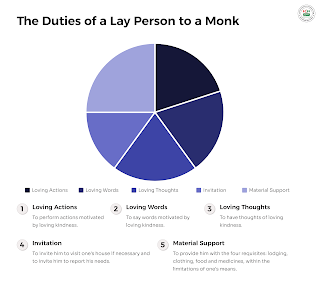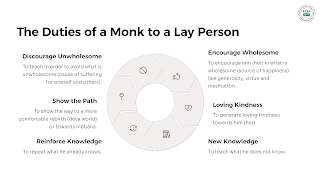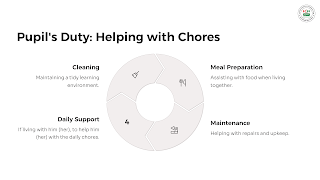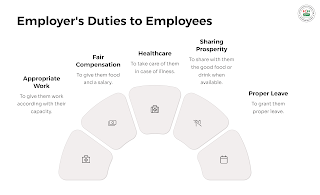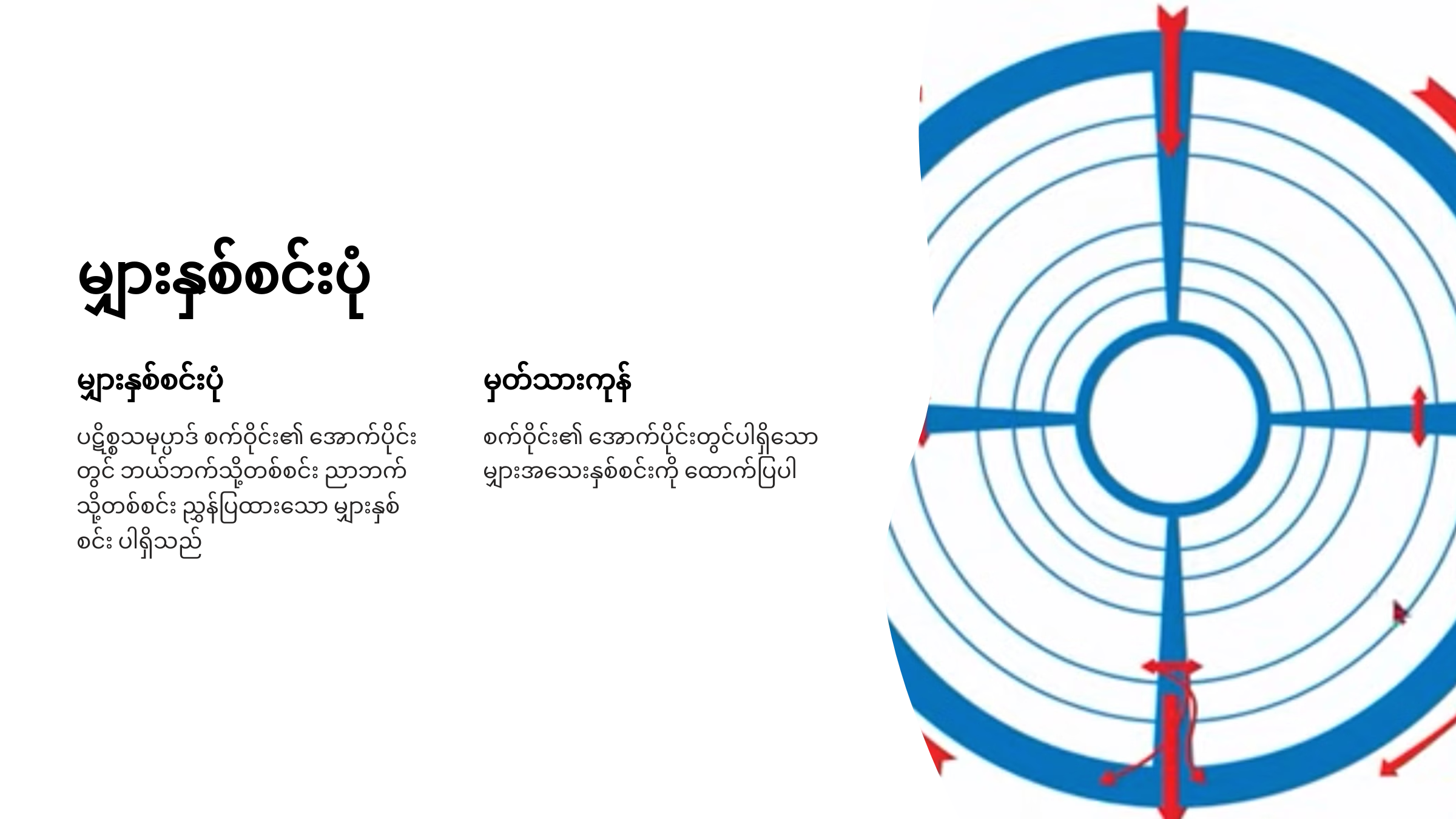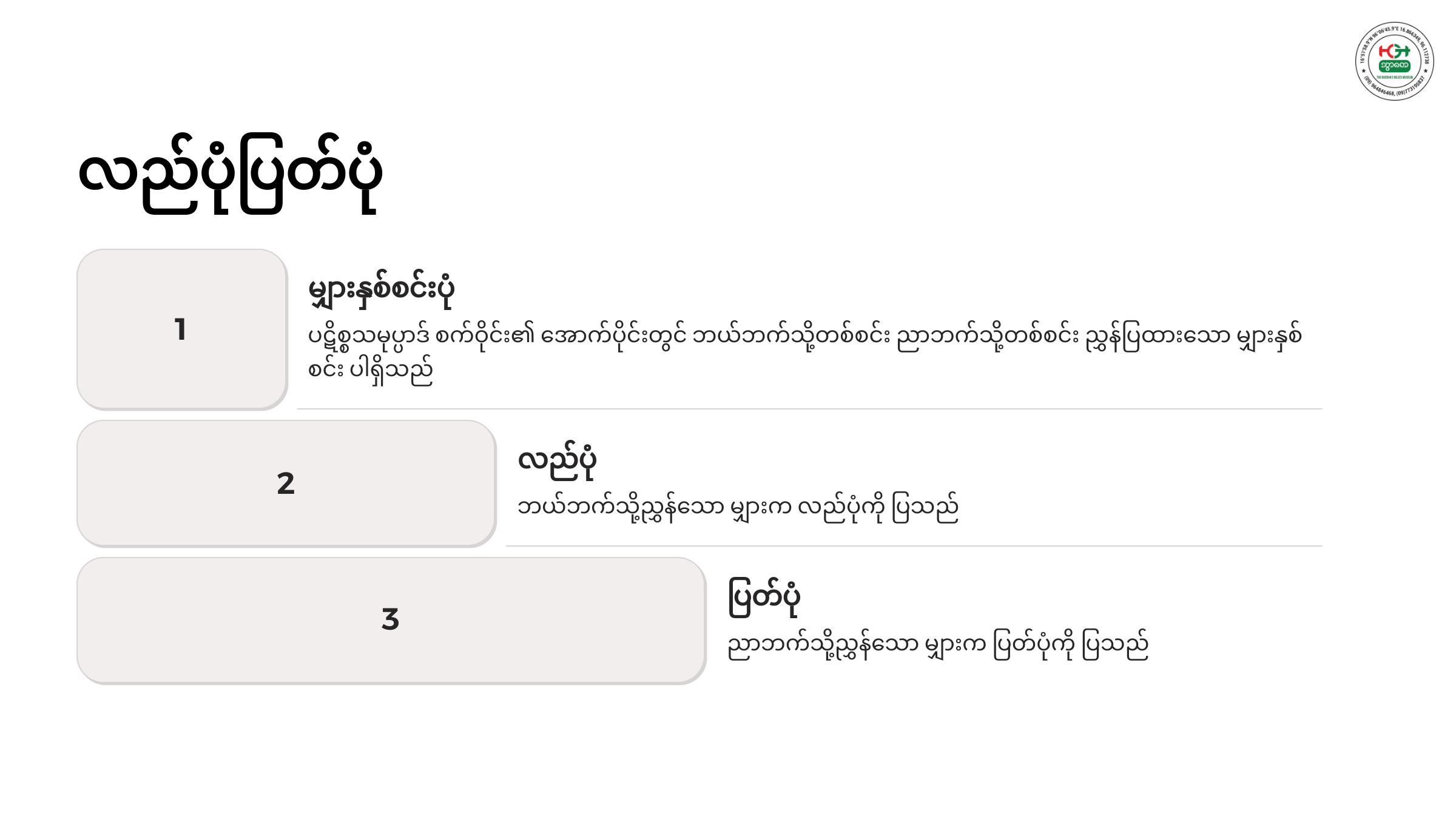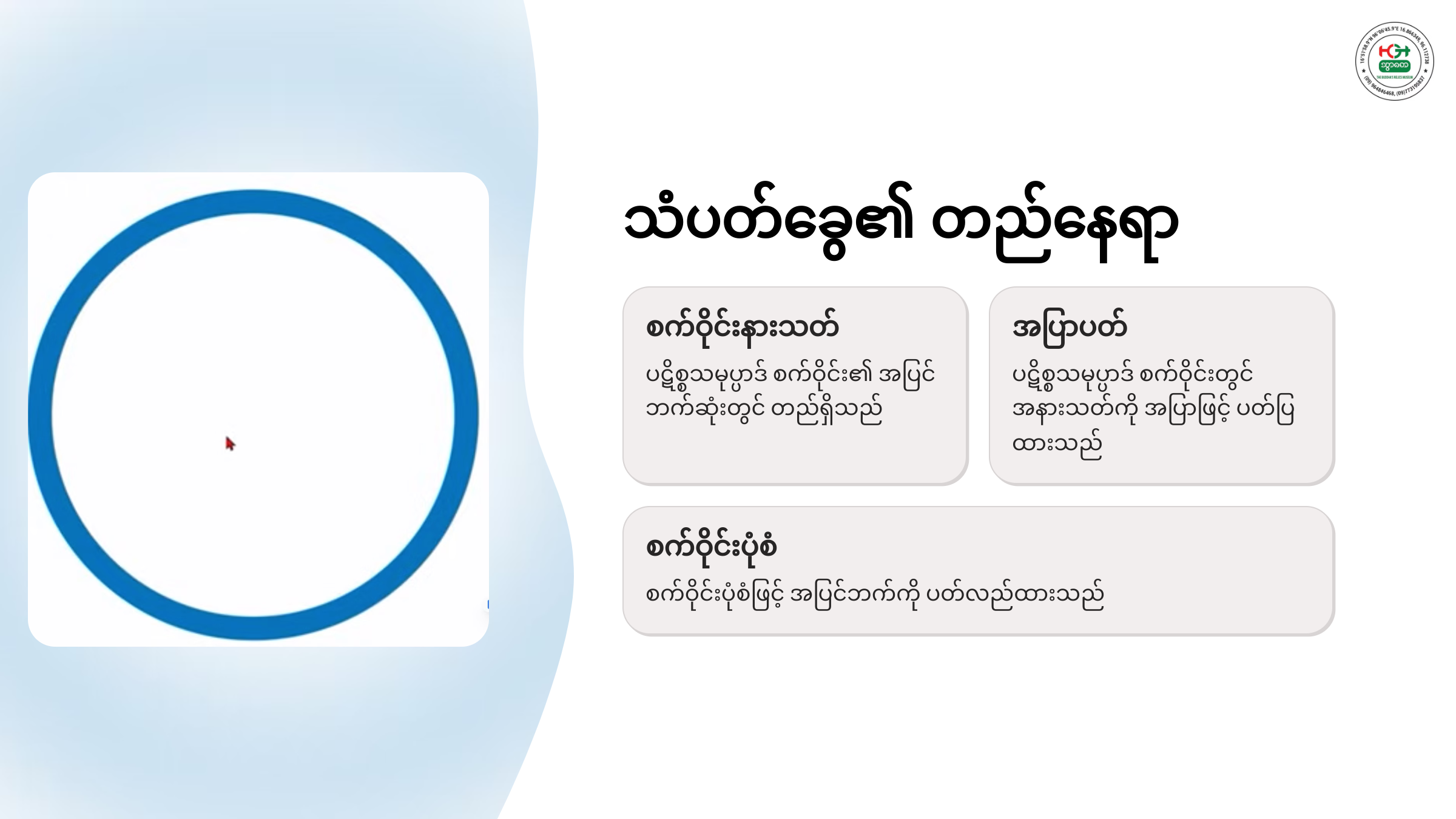Anekajātisaṃsāraṃ sandhāvissaṃ anibbisaṃ gahakāraṃ gavesanto dukkhā jāti punappunaṃ Gahakāraka diṭṭho'si puna gehaṃ na kāhasi sabbā te phāsukā bhaggā gahakūṭaṃ visaṅkhataṃ visaṅkhāragataṃ cittaṃ taṇhānaṃ khayamajjhagā (The Dhammapada, verses 153-154)
ဝန္ဒာမိ
vandāmi cetiyaṃ sabbaṃ, sabbaṭṭhānesu patiṭṭhitaṃ. Ye ca dantā atītā ca, ye ca dantā anāgatā, paccuppannā ca ye dantā, sabbe vandāmi te ahaṃ.
Total Pageviews
Search This Blog
Saturday, March 22, 2025
Friday, March 14, 2025
Thursday, March 13, 2025
To effectively use your supporting PowerPoint (Visual Aid)
To effectively use your supporting PowerPoint (Visual Aid) slides as part of the VAKT Methodology:
Translating the supporting materials can be both simple and challenging at times.
Thanks to the use of AI technology, the time required for PPT design can be reduced time for creation it.
The AI solely for design purposes, it not only enhances efficiency and speed but also reduces the workload.
The supporting materials being created now are intended for a one-hour teaching session.
Since the teaching will follow the Paṭiccasamuppāda (Dependent Origination) method, analyzing certain aspects from an Abhidhamma perspective might deviate from the original teaching objectives.
For example, when discussing Phassa (Contact):
"Cakkhuñca paṭicca rūpe ca uppajjati cakkhuviññāṇaṃ, tiṇṇaṃ saṅgati phasso, phassapaccayā vedanā"
("Dependent on the eye and forms, eye-consciousness arises; the meeting of the three is contact; from contact arises feeling.")
When we illustrating the aggregates (khandhas), the aim is to highlight that the meeting of the clear eye, form, and eye-consciousness—the three—results in phassa (contact). Therefore, aspects like rūpa (form) or manasikāra (attention) will be omitted here. In other words, when referring to rūpa (form), light is inherently included, as form cannot be perceived without light. Similarly, when cakkhuviññāṇa (eye-consciousness) is mentioned, it implies that attention is still present, leading to the arising of consciousness—this should be understood accordingly.
When it comes to lessons like the analysis of elements (dhātu kammaṭṭhāna), it involves discussing the four great elements (mahābhūta) and the four subtle elements (vaṇṇa [color], gandha [smell], rasa [taste], ojā [nutritive essence]), etc. These need to be incorporated under their respective lesson topics. This involves drafting syllabi and coordinating teaching plans—a continuous process of improvement and development. This requires collaboration with certain administrative systems and their implementation. At this stage, I won’t delve into matters like Monitoring and Evaluation (M&E).
Since these are supporting slides, overly detailed content isn’t included in writing. Instead, the details are elaborated during the teaching session. For this reason, the PPT slides include Trainer Notes, which the audience cannot see but serve to remind the speaker.
How are these created? They are linked to lesson plans in what’s called a Teacher Manual Handbook, a guide for teachers. Therefore, simply having these supporting PPT slides doesn’t guarantee achieving the lesson’s objectives for that subject—it’s an incredibly challenging task. To successfully deliver the intended goals, it requires training such as How to Deliver courses (e.g., refresher courses or teacher training), combining various tools and methodologies.
For example, according to the Paṭiccasamuppāda method:
When internal and external sense bases (āyatana) and elements (dhātu) come into contact (phassa), the five aggregates (khandhas) arise and cease together at the relevant sense doors, embodying the nature of anatta (non-self). The arising of these aggregates—or in other words, the five aggregates—occurs due to the meeting of two material phenomena (rūpa). This principle (e.g., when distinguishing the aggregates, sense bases, consciousness, mental factors, and matter) emphasizes the power of conditionality (paccaya satti). The aim is to provide intellectual clarity about causes to help eliminate sakkāya-diṭṭhi (the view of a permanent self). For this reason, mental factors (cetasikas) aren’t extensively analyzed as in Abhidhamma. The focus is primarily on directing attention toward kāyānupassanā (contemplation of the body), vedanānupassanā (contemplation of feelings), cittānupassanā (contemplation of mind), and dhammānupassanā (contemplation of phenomena), enabling direct observation or insight into the Four Noble Truths through the aggregates. This is the sequence of teaching the Dhamma.
Thus, when preparing supporting materials for lessons taught according to Paṭiccasamuppāda, they may occasionally differ from the Abhidhamma approach. For those proficient in teaching Abhidhamma, this might feel slightly unsatisfactory, which is only natural. Whether it’s the Paṭṭhāna method, Abhidhamma method, Paṭiccasamuppāda method, or Sutta method, each has its own sequence and process, with slight variations—this is indeed true.
For ordinary laypeople or elderly individuals with limited exposure to the Buddha’s Pali discourses or Abhidhamma, the teaching must be adapted to the audience’s context—clearly and understandably explained. This is a quality of a Dhamma teacher (dhammakathika). Striving to deliver teachings in a way that’s widely comprehensible is, in reality, no easy task.
If we were to create supporting materials based on the Paṭiccasamuppāda Visual Aid (Cycle) Teaching Aid .discourse by the Venerable Mogok Sayadaw, we’d need to consider Mogok’s five core principles while developing the content. Then, it must be cross-checked with the original Pali discourse, repeatedly reviewed, and only then finalized into PPT slides.
In the PowerPoint slides created now, I really appreciate some of the images generated by AI. However, elements like colors, text, sections, and layers from the original Paṭiccasamuppāda Visual Aid (Cycle) Teaching Aid need to be edited according to their respective components. For instance, if discussing section 1, sections 2, 3, and 4 must be removed from that slide to ensure the Paṭiccasamuppāda discourse is conveyed accurately and effectively. This takes a lot of time—proceeding slowly and carefully.
With loving-kindness,
Ven. Dhammasāmi
သင်ထောက်ကူ Power Point (Visual aid)တွေ
ထိထိမိမိ VAKT Methodology အဖြစ်အသုံးပြုနိုင်ဖို့ရာ
၁- ဘာသာပြန်ဆိုရတဲ့ သင်ထောက်ကူတွေ ဟာ လွယ်သလိုနဲ့ခက်တတ်ပါတယ်
၂- အေအိုင်နည်းပညာကို သုံးလာနိုင်တဲ့အတွက် PPT Design အတွက် အချိန် အများကြီး ချုံ့နိုင်သွားပါတယ်..။
၃- အေအိုင်ဟာ ဒီဇိုင်းလောက်ကိုပဲ အသုံးပြုခြင်းအားဖြင့် ထိရောက်မြန်ဆန်မူကို အထောက်အကူဖြစ်စေသလို ဝန်ကိုလဲလျော့ချနိုင်ပါတယ်..။
၄- အခုဖန်တီးတဲ့သင်ထောက်ကူတွေဟာ တစ်နာရီစာ သင်ကြားရေးအတွက် ရည်ရွယ်ပါတယ်
၅. ပဋိစ္စသမုပါဒ်နည်းနဲ့ ဟောကြားလေ့လာမှာဖြစ်တဲ့အတွက် အချို့သော အရာတွေကို အဘိဓမ္မာ အမြင်နဲ့ ရူမြင်တိုင်းတာရင်တော့ နဂိုသင်ကြားရေးရည်မှန်းချက်နဲ့ ကွဲလွဲသွားစေတတ်ပါတယ်...။
ဥပမာ ဖသ၁ အကြောင်းကို ပြောကြမယ်ဆိုတဲ့အခါ
စက္ခုံစ ပဋိစ္စရူပေစ - ဥပ္ပဇ္ဇတိ စက္ခုဝိညာဏံ၊ တိဏ္ဏံသင်္ဂတိဖေဿာ၊ ဖဿပစ္စယာဝေဒနာ၊
ခန္ဓာဖွဲ့ပြတဲ့အခါမှာ မျက်စိအကြည် ၊ အဆင်း ၊ မြင်သိစိတ် ( ၃) ပါးဆုံတာကို ဖဿ လို့ဒေသနာလာရင်းကို High Light ပြချင်တာဖြစ်လို့
အဆင်းတို့ နှလုံးသွင်းတို့တွေကို ဒီနေရာမှာ ချန်လှပ်ထားမှာဖြစ်ပါတယ်
တနည်းအားဖြင့် အဆင်းဟု ဆိုလျင် အလင်းသည် တွဲလျက်ပါပြီးသားဖြစ်လေသည်။ အလင်းမရှိပဲ အဆင်းဓာတ်ဟု ဆိုနိုင်ဖွယ်မရှိချေ...။
စက္ခုဝိညာဏံ ဟုဆိုသဖြင့် နှလုံးသွင်းမူ ရှိနေသေးသဖြင့် သာ မြင်သိစိတ်ပေါ်ပေါက်သည်ဟု နားလည်ထားရမည်ဖြစ်သည်။
ဓာတ်ကမဌာန်းသင်ခန်းစာမျိုးရောက်တ့ဲအခါ
ဓာတ်ကြီး ၄ ပါး အကြောင်းပြောရသလို
ဓာတ်ငယ် ၄ ပါး ဝဏ္ဏ ဂန္ဓ ရသ ဩဇာ စသည်အားဖြင့်
သူ့ဆိုင်ရာ ဆိုင်ရာ သင်ခနိးစာခေါင်းစဉ်အောက်မှာ ထည့်ပေးရတ့ဲ စီမံမူမျိုးကို
သင်ရိုးညွှန်းတမ်းရေးဆွဲ ခြင်းဆိုတ့ဲ
သင်ကြားစီမံတို့က ဝိုင်းဝန်းချိန်ညှိရတ့ဲ
စဉ်ဆက်မပြတ် တိုးတက်မူ ဖွံ့ဖြုးမူြဖစ်စေဖို့
အချို့သော စီမံခန့်ခွဲရေးဆိုင်ရာ စနစ်တွေန့ဲ
အကောင်အထည်ဖေါ်ရပါတယ်
ဒီနေရာမှာ M&E ကိစ္စရပ်တွေအထိပါထည့်မပြောလိုသေးပါ
သင်ထောက်ကူ Slide တွေဖြစ်တဲ့အတွက် အသေးစိတ် Detail ကြီးတော့ ထည့် သွင်းမရေးသားပဲ စာသင်ကြားပို့ချတဲ့အချိန်မှာ ထည့်သွင်းပြောကြားပေးတဲ့စနစ်အတွက် PPTတွေမှာ Trainer Notes တွေ ထည့် ထားပါတယ် ။ Audiences တွေကတော့မမြင်နိုင်ပါဘူး ။ Speaker တွေကို Remind လုပ်နိုင်အောင် ပါ။
ဒါတွေကို ဘယ်လိုကနေ ဖန်တီး၇သလဲဆိုရင် Teacher Manual Hand Book လို့ခေါ်တဲ့ ဆရာကိုင်လမ်းညွန်တွေမှာ Lesson Plan တွေနဲ့ ချိတ်ဆက်ထားတဲ့သဘောသဘာ၀ဖြစ်ပါတယ်။
ဒါကြောင့် သင်ထောက်ကူ PPT Slides လေးတွေကို ရရုံမျှနဲ့
အဲဒီဘာသာရပ် သင်ခန်းစာအတွက် ပန်းတိုင်ရောက်အောင်
သင်ကြား နိုင်ခြင်းဖြစ်ဖို့ဆိုတာ အင်မတန် စိန်ခေါ်မူများတဲ့ ကိစ္စဖြစ်ပါတယ်။
ရည်ရွယ်ချက်ကို ပေါက်ရောက်အောင် သင်ကြားပို့ချနိုင်ဖို့ရာ
How To Deleiver ဆိုတဲ့ သင်တန်း မျိုး (မွန်းမံသင်တန်း ဆရာဖြစ်သင်တန်း) ဘယ်လို Tools တွေ ဘယ်လို Methodloigies တွေနဲ့ ပေါင်းစပ်သင်ကြားရမလဲဆိုတဲ့ နည်းပညာ သင်တန်းတွေ ထပ်ပြီး ပို့ချပေးရတာဖြစ်ပါတယ်။
ဥပမာအနေနဲ့-
ပဋိစ္စသမုပ္ပါဒ် နည်းအလိုအရ
အတွင်းအပြင် အာယတန ဓာတ်တွေ ဖဿ ဖြစ်တဲ့အချိန်မှာ ဆိုင်ရာ ဒွါရတွေမှာ ခန္ဓာ ၅ ပါး ဟာ ဖြစ်အတူ ပျက်အတူ အနတ္တသဘောအနေနှင့်
ပေါပေါက်ခြင်းကိစ္စနှင့် ထို အပွင့်ဓာတ်များ တနည်း ခန္ဓာ ၅ ပါး တို့ပေါ်ပေါက်လာခြင်း၏အကြောင်း ကိစ္စမှာ ရုပ် တရား ၂ ခု ပေါင်းဆုံမူ တွေ့ဆုံမူကြောင့် ဖြစ်ပေါ်လာသည်ဟူသော သဘောတရား အကြောင်း (ခန္ဓာ ၊ အယတန ၊ စိတ် ၊ စေသတိတ် ၊ရုပ်တွေခွဲပြတဲ့အခါမှာ )းဆက်စပ်မူတနည်းအားဖြင့် ပစ္စယာ သတ္တိကို အထူး အလေးပေးတင်ပြတဲ့
နည်းဗျူဟာဖြစ်ပါတယ်
အဲဒီကနေ အကြောင်းအပေါ်ဉာဏ်ရှင်းသဖြင့် သက္ကာယ ဒိဌိ ကို
စာသိအားဖြင့် သိရှိစေရန် အားပြု ပြသရတဲ့ ဟောစဉ်ဖြစ်ပါတယ်
ဒါကြောင့် စေတသိက်တရားတွေကို အဘိဓမ္မာမှာလို အများကြီး ခွဲမပြတော့ပါဘူး
အဓိကကတော့ ကာယနုပဿနာ ၊ စိတ္တာ ၊ဓမ္မာ ၊ဝေဒနာ နုပဿနာ ဘက်ကို
တိုက်ရိုက် ရူနိင်အောင် (ဝါ) ခန္ဓာ ဖွဲ့ရာကနေ သစ္စာ ကို ဆင်ခြင်နိုင်အောင်
လုံ့လပြုဟောပြောပေးရတဲ့ ဓမ္မဟောစဉ် တရားစဉ် ဖြစ်ပါတယ်...။
ထို့ကြောင့် ပဋိစ္စသမုပါဒ် အလိုဖြင့် ဟောကြားပြသတဲ့ သင်ခန်းစာတွေအတွက် သင်ထောက်ကူတွေကို ပြင်ဆင်တဲ့အခါမှာ
အဘိဓမ္မာ ဟောစဉ် နဲ့ တစ်ခါခါ ထပ်တူမကျနေတာမျိုးကြောင့်
အဘိဓမ္မာကို ကျွမ်းကျင်စွာ သင်ကြားတတ်မြောက်ထားသူတွေအဖို့
အနည်းငယ် အားမလိုအားမရ ဖြစ်သွားတတ်တာဟာ သဘာ၀ ပဲဖြစ်ပါတယ်။
ပဌာန်း နည်း ၊ အဘိဓမ္မာနည်း ၊ ပဋိစ္စသမုပါဒ်နည်း ၊ သုတ္တံနည်း စသည်အားဖြင့် ဘယ်နည်းမှာမဆို သူ့တရားစဉ်နှင့် လုပ်ငန်းစဉ် သဘောသဘာ၀တို့သည် အနည်းငယ် ကွာဟမူရှိသည်တော့အမှန်ပင်ဖြစ်သည်။
ဘုရားဟော ပဠိတော် အဘိဓမ္မာ တို့နှင့် ထိတွေ့မူနည်းတဲ့
သာမာန်အရပ်သူအရပ်သားများ သက်ကြီးရွယ်အိုများ
အတွက် တနည်းအားဖြင့် Audiences အခြေအနေအလိုက်
ရှင်း လင်းနားလည်အောင် ဟောပြောရခြင်းသည်
တရားဟောဓမ္မကထိကတို့၏ အရည်အသွေးတစ်ရပ်ဖြစ်သဖြင့်
အများနားလည်လွယ်သော ဟောစဉ်များဖြင့် ဟော ပြောနိုင်အောင်
ကျိုးစားခြင်းသည်လည်း တကယ်တော့ လွယ်ကူသော အလုပ်ကိစ္စတော့မဟုတ်ချေ။
မိုးကုတ်ဆရာတော်ဘုရားကြီးရဲ့ စက်ဝိုင်းဒေသနာတော်ကို
ကျောရိုးယူပြီး သင်ထောက်ကူတွေကို ဖန်တီးမယ်ဆိုရင်
မိုးကုတ်ရဲ့ မူ ၅ ချက်ဆိုတာကို ထည့်သွင်းစဉ်းစားပြီးတော့မှ
Content Creation လုပ်ရပါတယ်...။
ပြီးရင် မူရင်းဟောတဲ့ ပဠိဒေသနာတော်လာ နဲ့ ပြန်ပြီး ကိုက်ညှိရပါသေးတယ်။ အဖန်ဖန် အကြိမ်ကြိမ် စိစစ်ပြီးတော့မှသာ PPT ဆလိုက်တွေကို ပြန်စိစစ်ရပါတယ်။
အခု ဖန်တီးထားတဲ့ ပါဝါပွိုင့်တွေမှာ အေအိုင်ကဆွဲပေးထာတဲ့ အချို့ပုံလေးတွေအတော်သဘောကျပါတယ်
သို့သော် မူရင်း စက်ဝိုင်းထဲက အရောင် စာသား အကွက် အလွှာ စတာတွေကို ဆိုင်ရာဆိုင်ရာ အင်္ဂါတွေ ခြင်းရာတွေ အလိုက် တည်းဖြတ် ( ဥပမာ ၁ အကွက် အကြောင်းကိုေပြာမယ်ဆိုရင် အဲဒီ ဆလိုက်မှာ ၂ အကွက် ၃ အကွက် ၄ အကွက်တွေကို ဖြတ်ထုတ်ပစ်တာမျိုး) ထည့်သွင်းမှသာ
စက်ဝိုင်းဒေသနာတော်ကို ထိထိမိမိ သဘောရမှာဖြစ်ပါတယ်။
အချိန်အများကြီးပေးရပါမယ်
ဖြည်းဖြည်းပေါ့....
မေတ္တာဖြင့်
အရှင်ဓမ္မသာမိ
Al
Subscribe to:
Posts (Atom)













